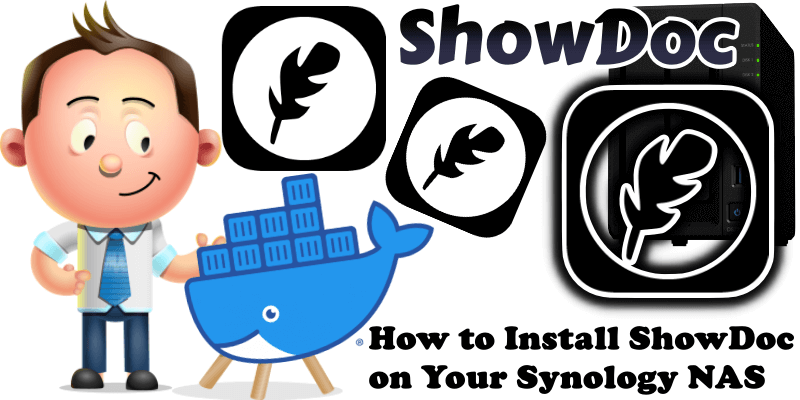
ShowDoc is an IT tool for sharing documents online. ShowDoc makes it easy to share documents between the members of a team for a more effective communication during group projects. In this step by step guide I will show you how to install ShowDoc on your Synology NAS with Docker.
STEP 1
Please Support My work by Making a Donation.
STEP 2
Install Container Manager via Synology “Package Center”. If you run an older DSM version (under 7.2), search for Docker instead of Container Manager.
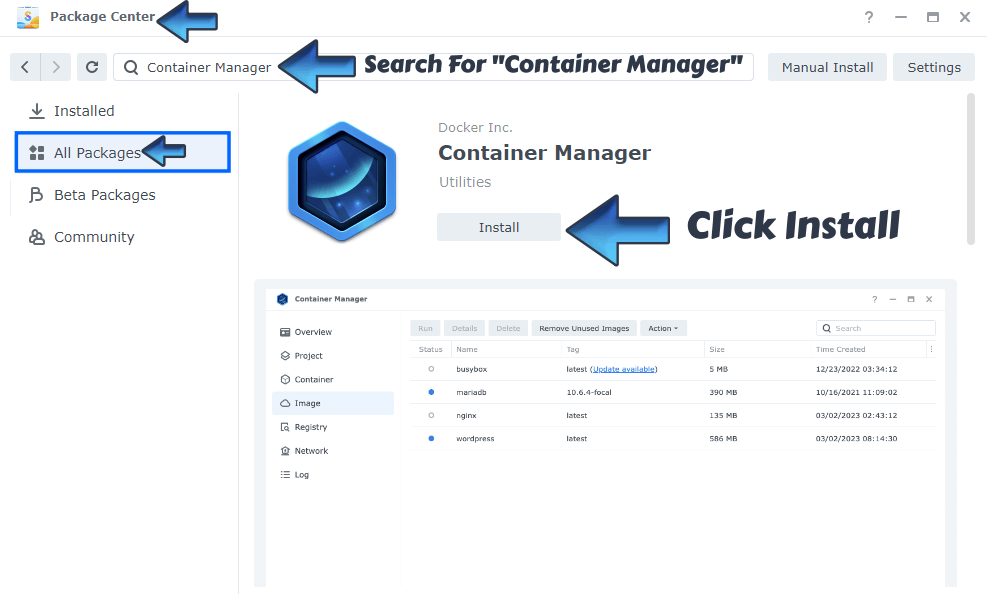
STEP 3
Make sure you have a synology.me Wildcard Certificate. Follow my guide to get a Wildcard Certificate. If you already have a synology.me Wildcard certificate, skip this STEP.
STEP 4
Go to Control Panel / Login Portal / Advanced Tab / click Reverse Proxy. Follow the instructions in the image below.
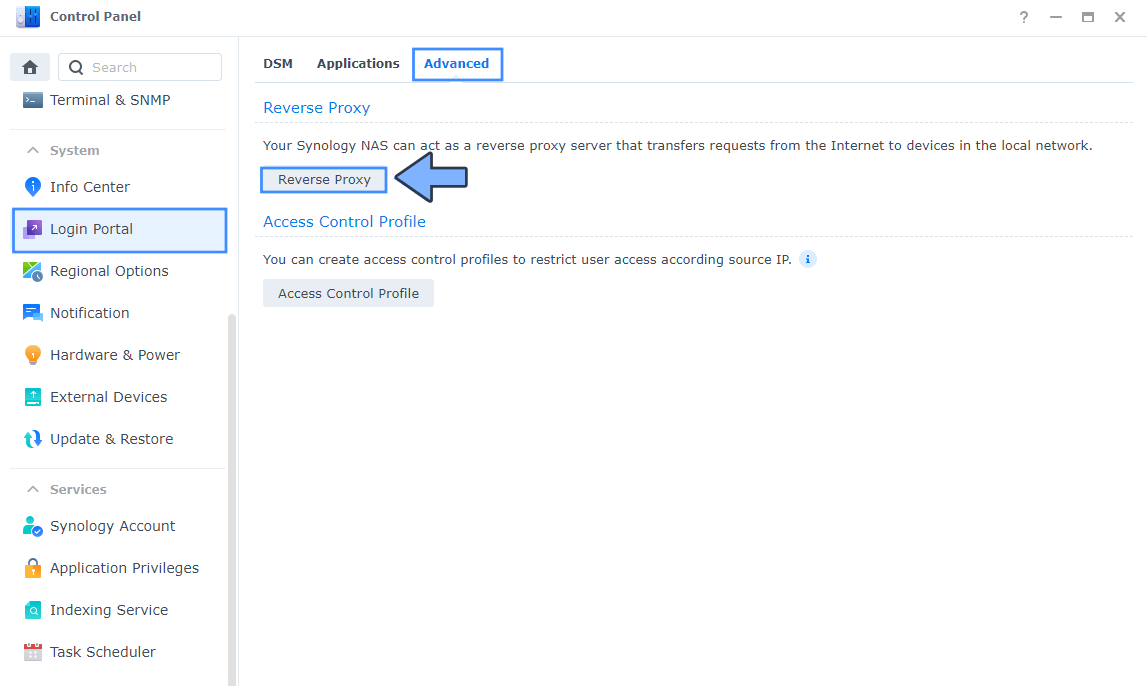
STEP 5
Now click the “Create” button. Follow the instructions in the image below.
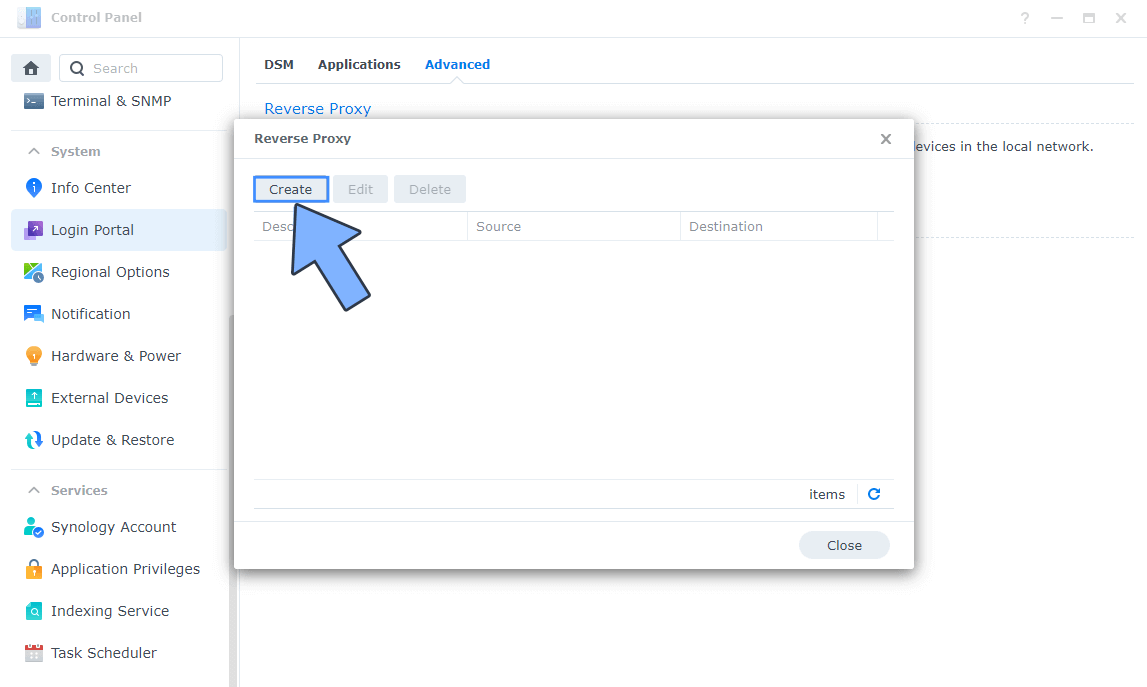
STEP 6
After you click the Create button, the window below will open. Follow the instructions in the image below.
On the General area, set the Reverse Proxy Name description: type in ShowDoc. After that, add the following instructions:
Source:
Protocol: HTTPS
Hostname: showdoc.yourname.synology.me
Port: 443
Check Enable HSTS
Destination:
Protocol: HTTP
Hostname: localhost
Port: 7991
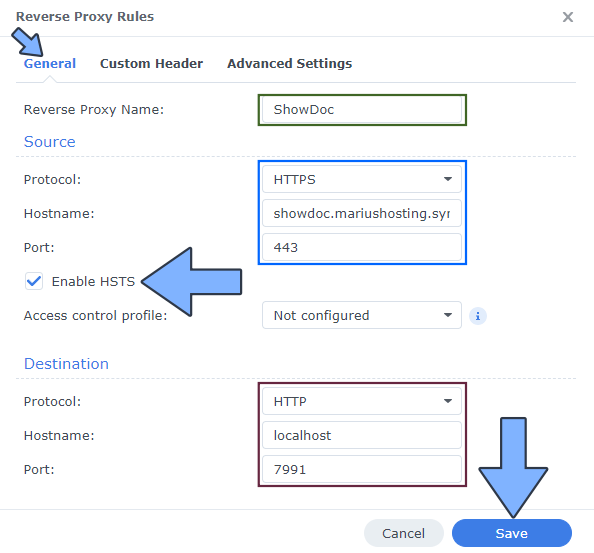
STEP 7
On the Reverse Proxy Rules, click the Custom Header tab. Click Create and then, from the drop-down menu, click WebSocket. After you click on WebSocket, two Header Names and two Values will be automatically added. Click Save. Follow the instructions in the image below.
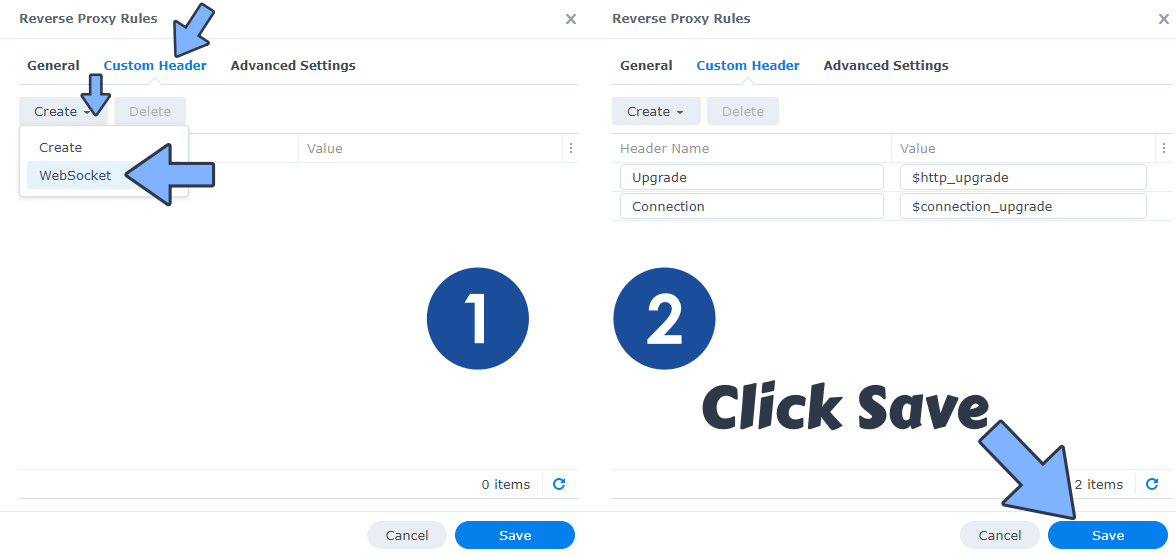
STEP 8
Go to Control Panel / Network / Connectivity tab/ Check Enable HTTP/2 then click Apply. Follow the instructions in the image below.
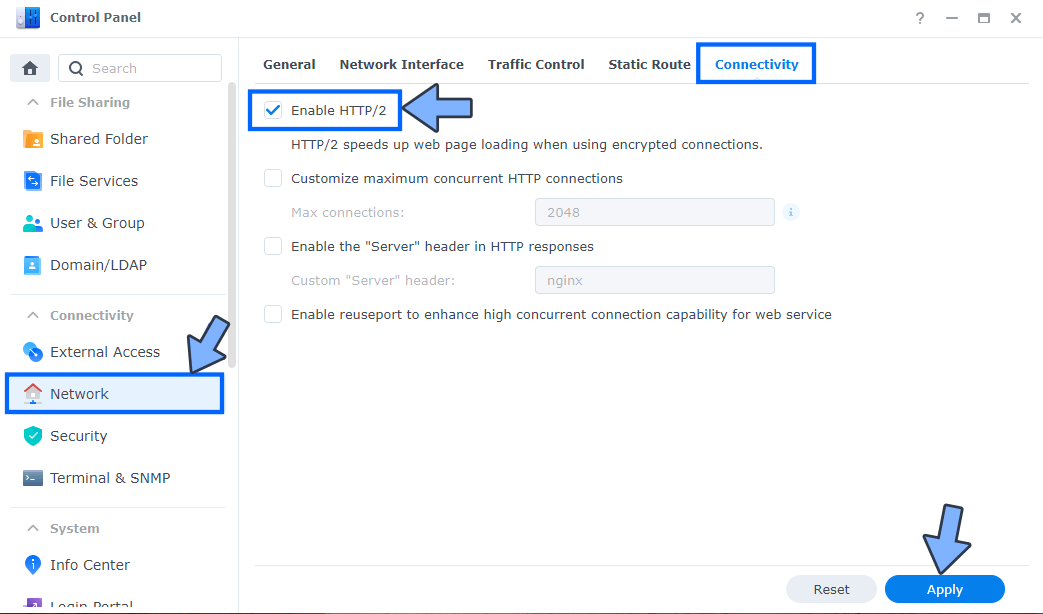
STEP 9
Go to Control Panel / Security / Advanced tab/ Check Enable HTTP Compression then click Apply. Follow the instructions in the image below.
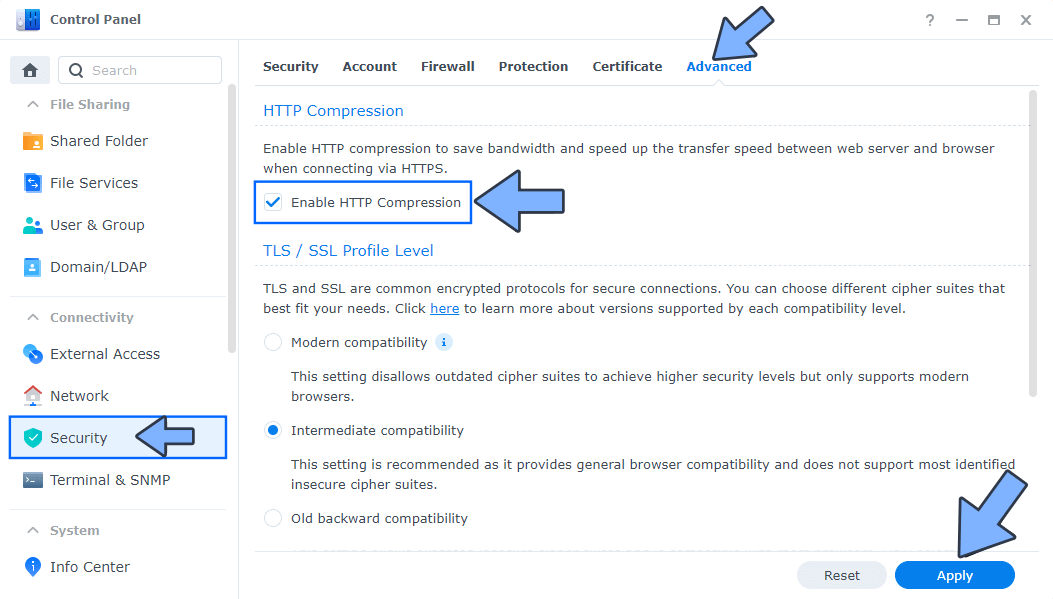
STEP 10
Go to File Station and open the docker folder. Inside the docker folder, create one new folder and name it showdoc. Follow the instructions in the image below.
Note: Be careful to enter only lowercase, not uppercase letters.
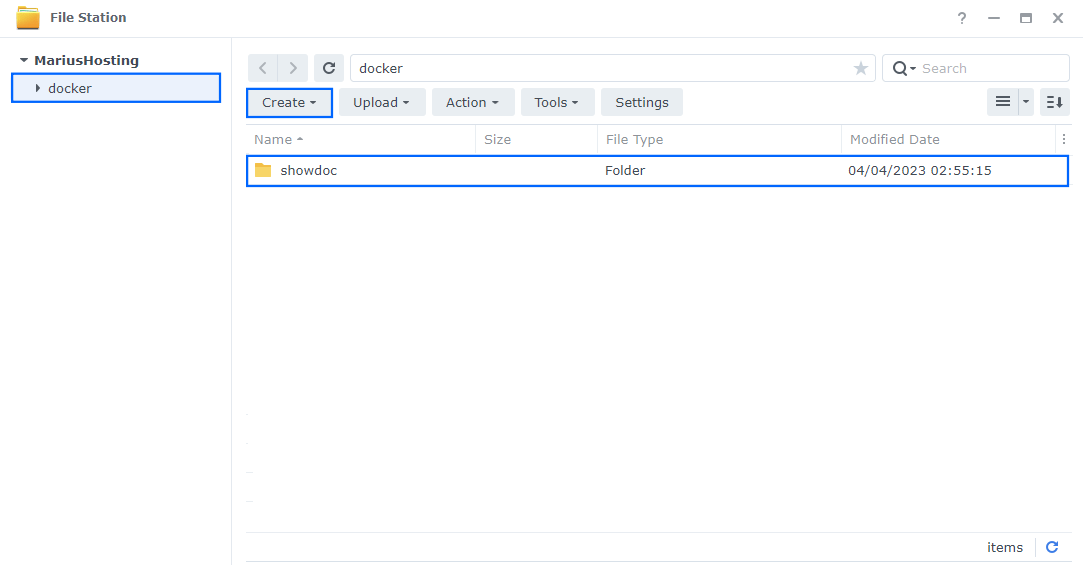
STEP 11
Go to Control Panel / Task Scheduler / Create / Scheduled Task / User-defined script. Follow the instructions in the image below.
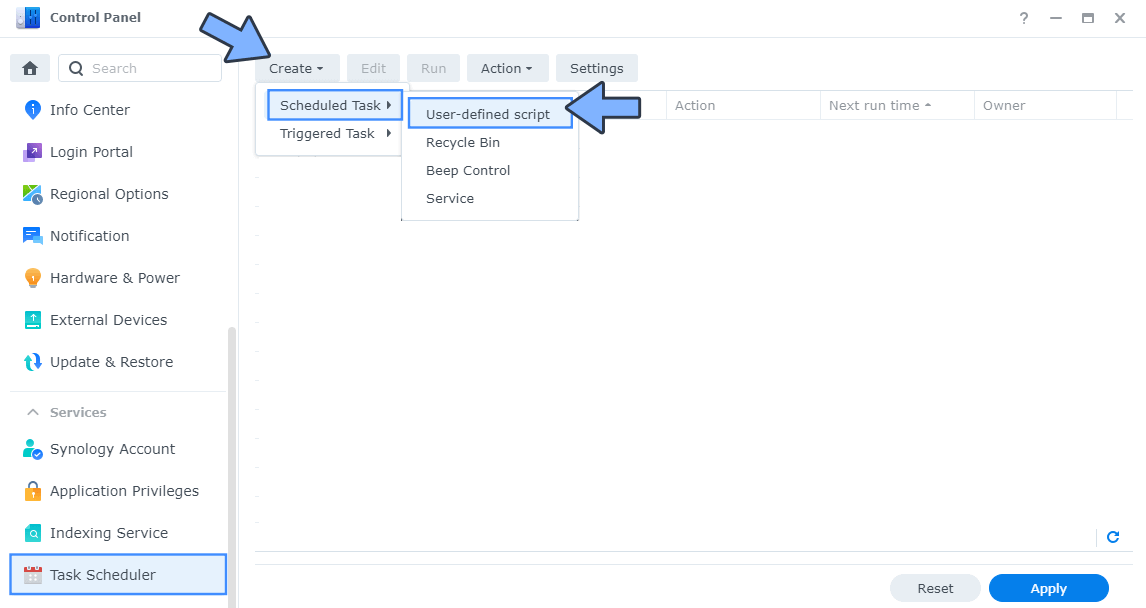
STEP 12
Once you click on User-defined script, a new window will open. Follow the instructions below:
- General: In the Task field type in Install ShowDoc. Uncheck the “Enabled” option. Select root User.
- Schedule: Select Run on the following date then select “Do not repeat“.
- Task Settings: Check “Send run details by email“, add your email then copy paste the code below in the Run command area. After that, click OK.
docker run -d --name=ShowDoc \ -p 7991:80 \ -v /volume1/docker/showdoc:/var/www/html/ \ --user=root \ --privileged=true \ --restart always \ star7th/showdoc
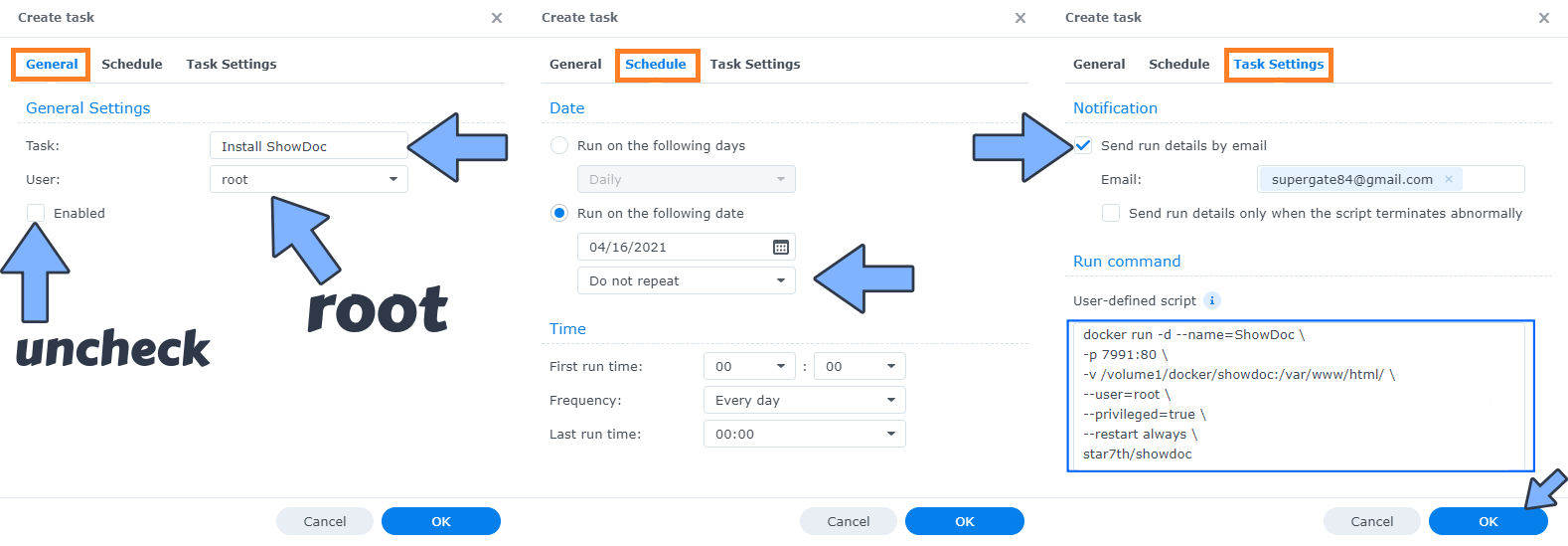
STEP 13
After you click OK on STEP 12 a new warning pop up window will open. Click OK.
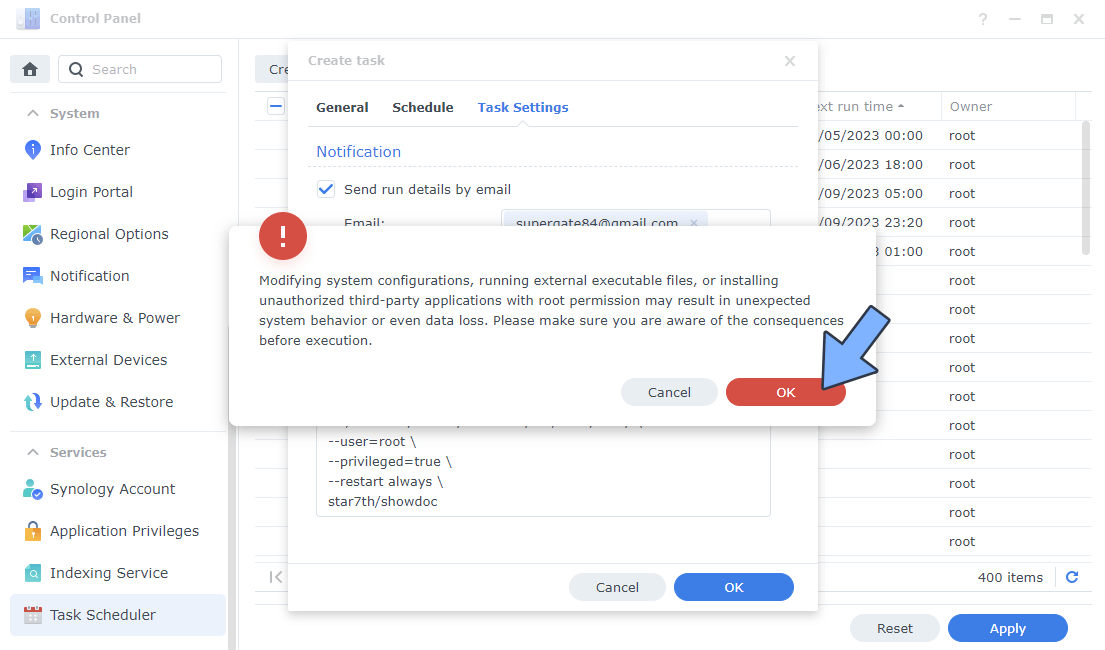
After you click OK, type in your DSM Password then click Submit. Follow the instructions in the image below.
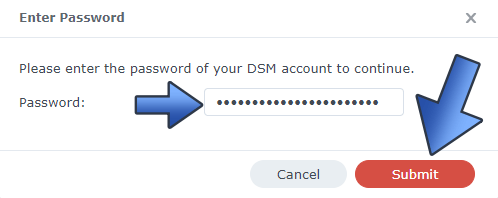
STEP 14
After you click Submit on STEP 13, select your “Install ShowDoc” Task, then click the “Run” tab. You will be asked to run Install ShowDoc – click OK. Follow the instructions in the image below.
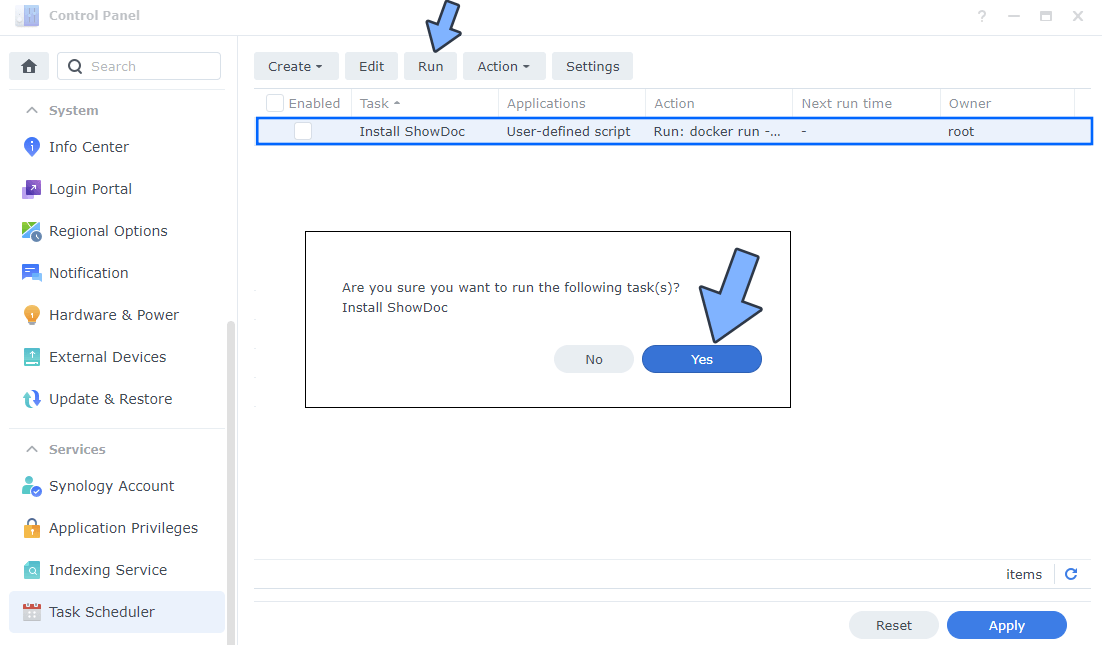
STEP 15
🟢Please Support My work by Making a Donation. Almost 99,9% of the people that install something using my guides forget to support my work, or just ignore STEP 1. I’ve been very honest about this aspect of my work since the beginning: I don’t run any ADS, I don’t require subscriptions, paid or otherwise, I don’t collect IPs, emails, and I don’t have any referral links from Amazon or other merchants. I also don’t have any POP-UPs or COOKIES. I have repeatedly been told over the years how much I have contributed to the community. It’s something I love doing and have been honest about my passion since the beginning. But I also Need The Community to Support me Back to be able to continue doing this work.
STEP 16
Now open your browser and type in your HTTPS/SSL certificate like this https://showdoc.yourname.synology.me In my case it’s https://showdoc.mariushosting.synology.me If everything goes right, you will see the ShowDoc main page. Choose your language. Follow the instructions in the image below.
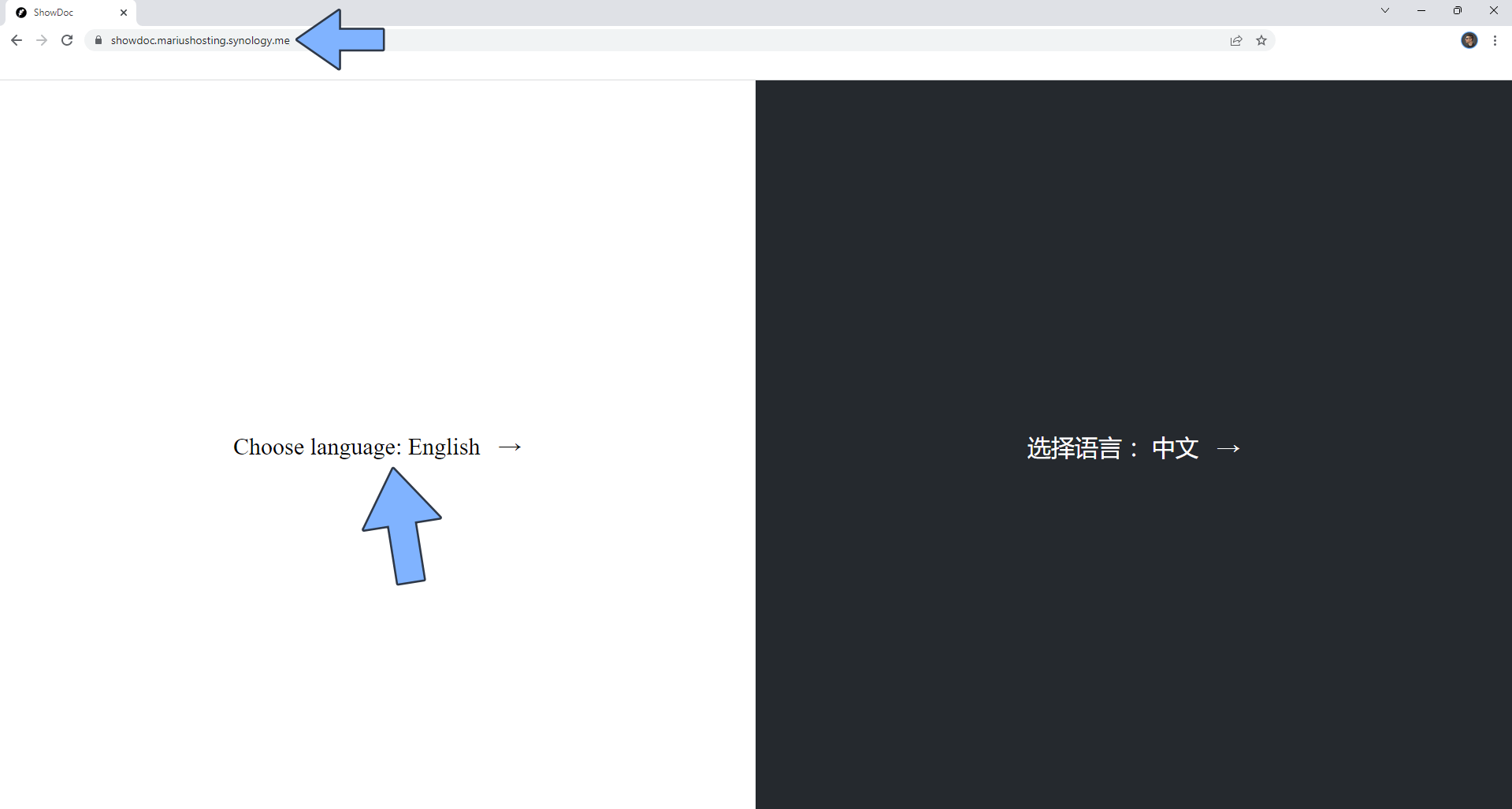
STEP 17
Click to enter the home page. Follow the instructions in the image below.
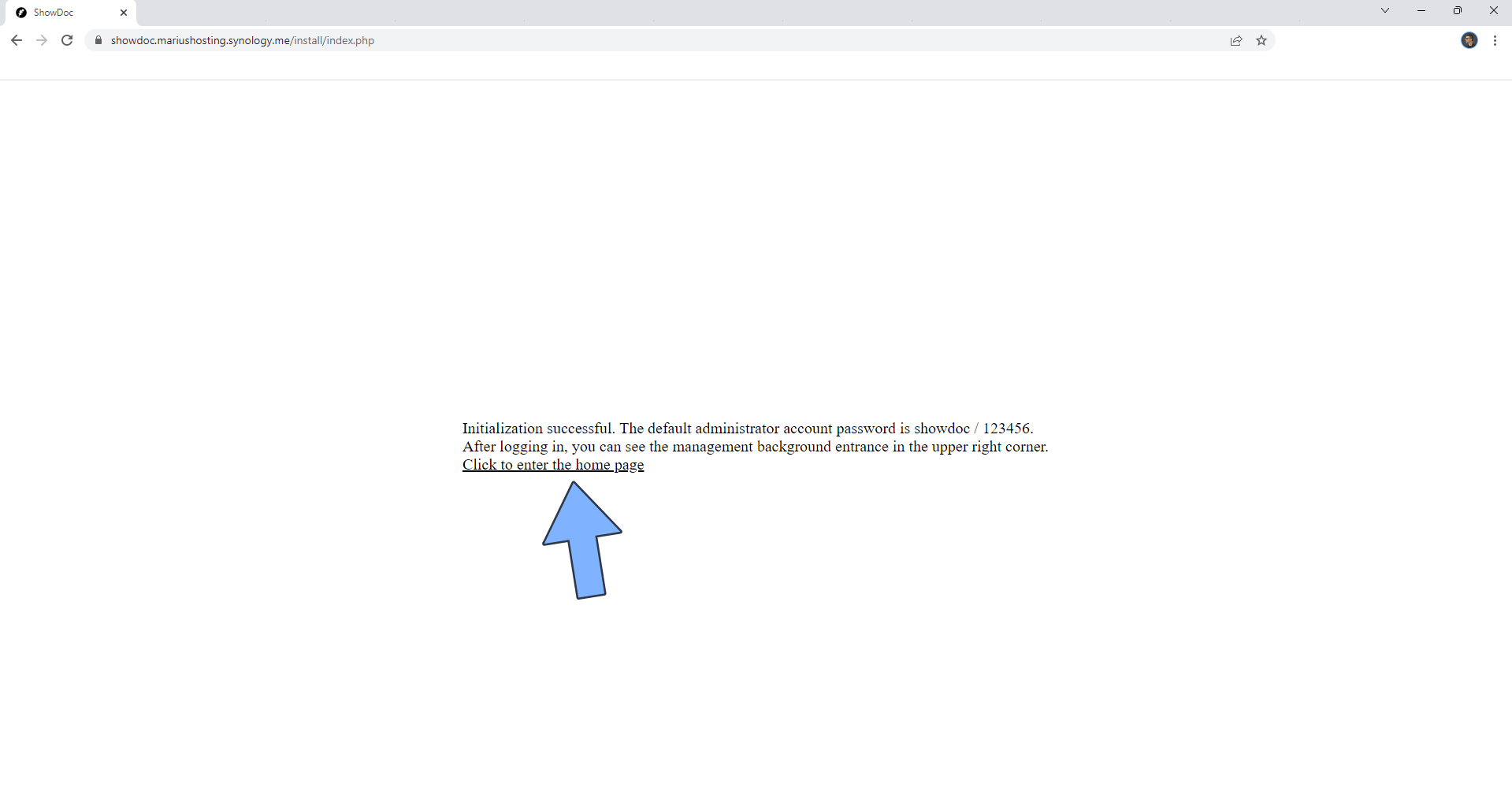
STEP 18
At the top right of the page, click Login. Follow the instructions in the image below.
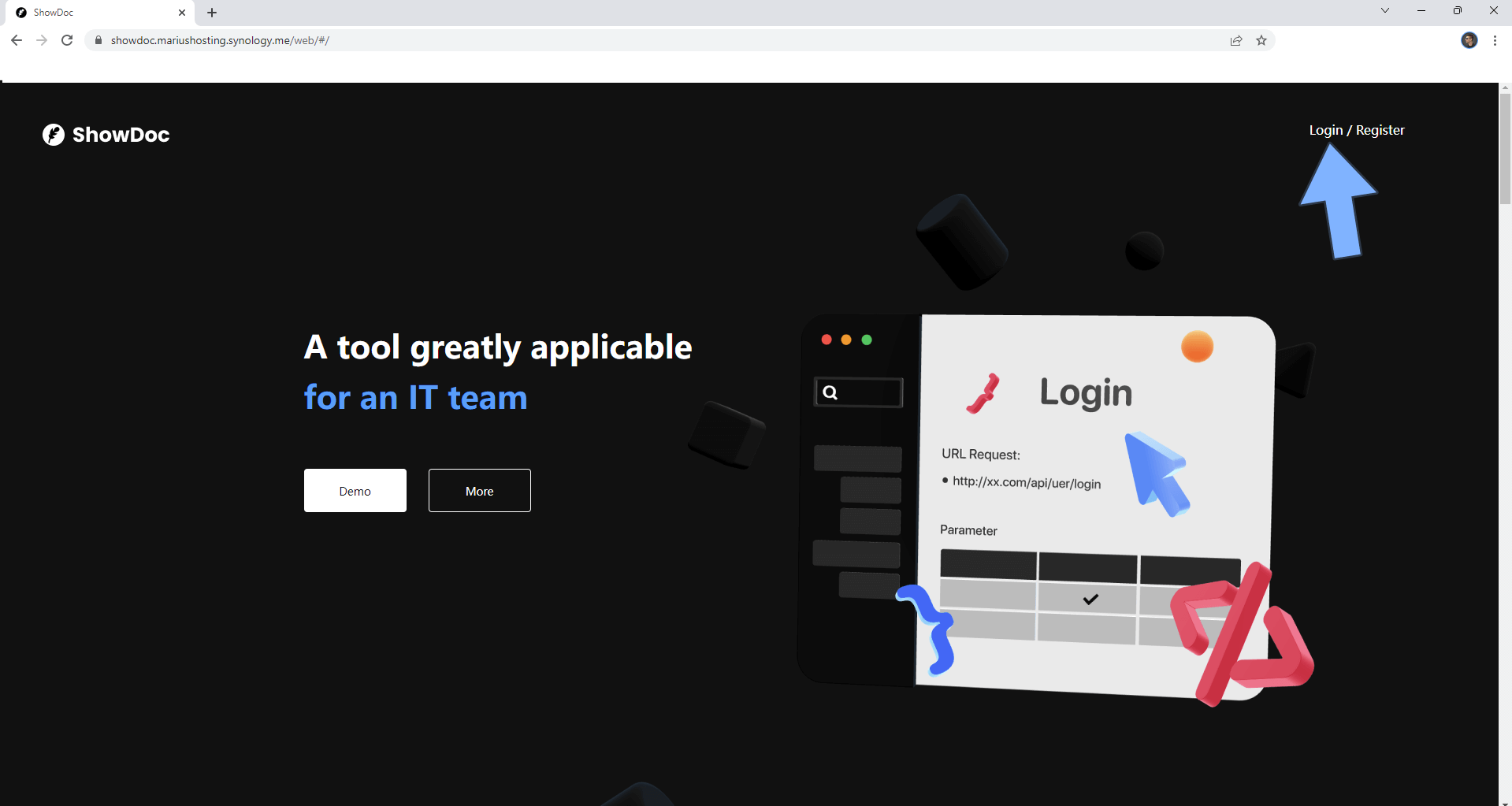
STEP 19
Type in the default username and password, then click Login.
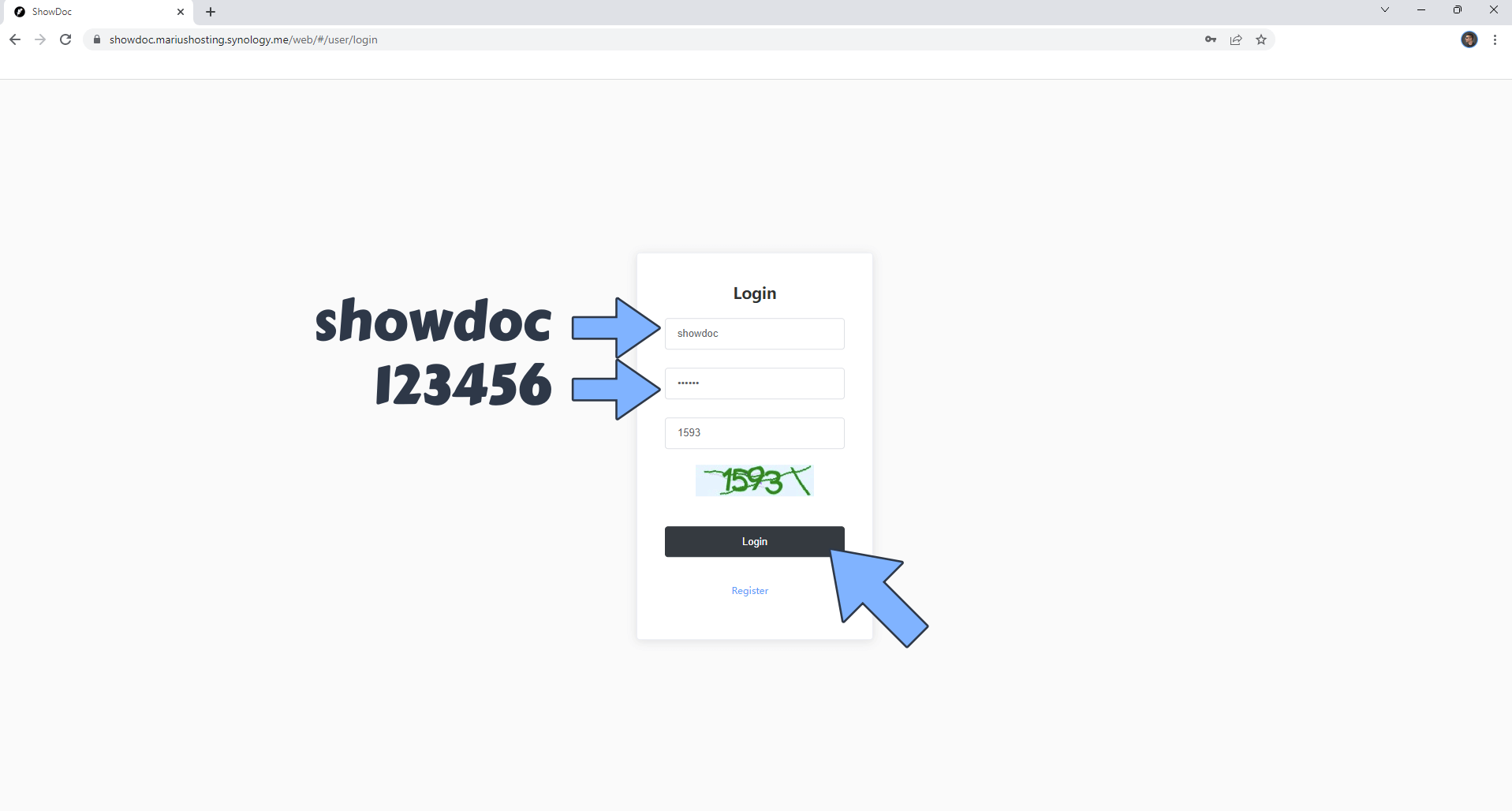
STEP 20
At the top right of the page, click on the gear icon. Follow the instructions in the image below.
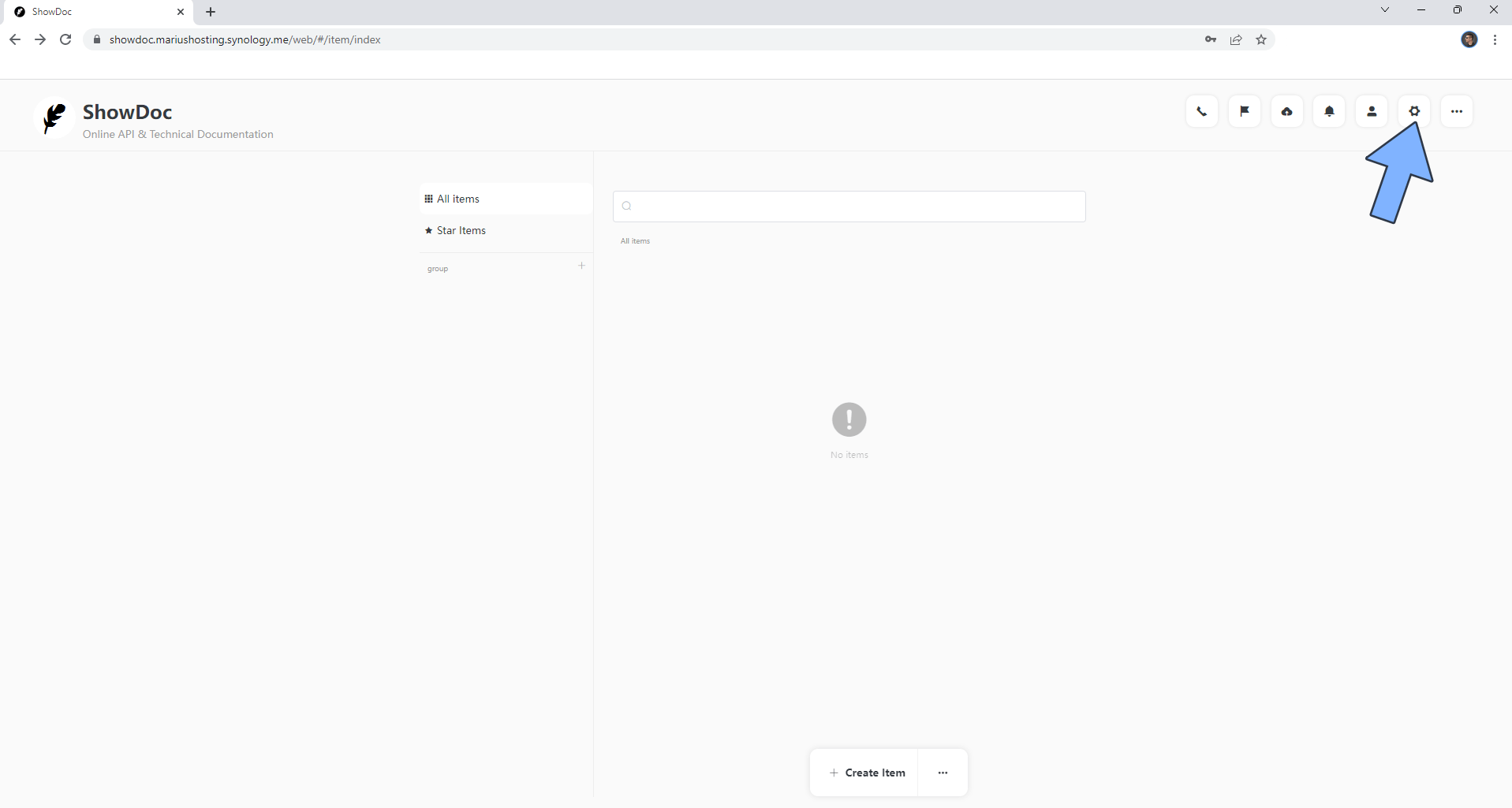
STEP 21
Change the default name and password by clicking Edit. Follow the instructions in the image below.
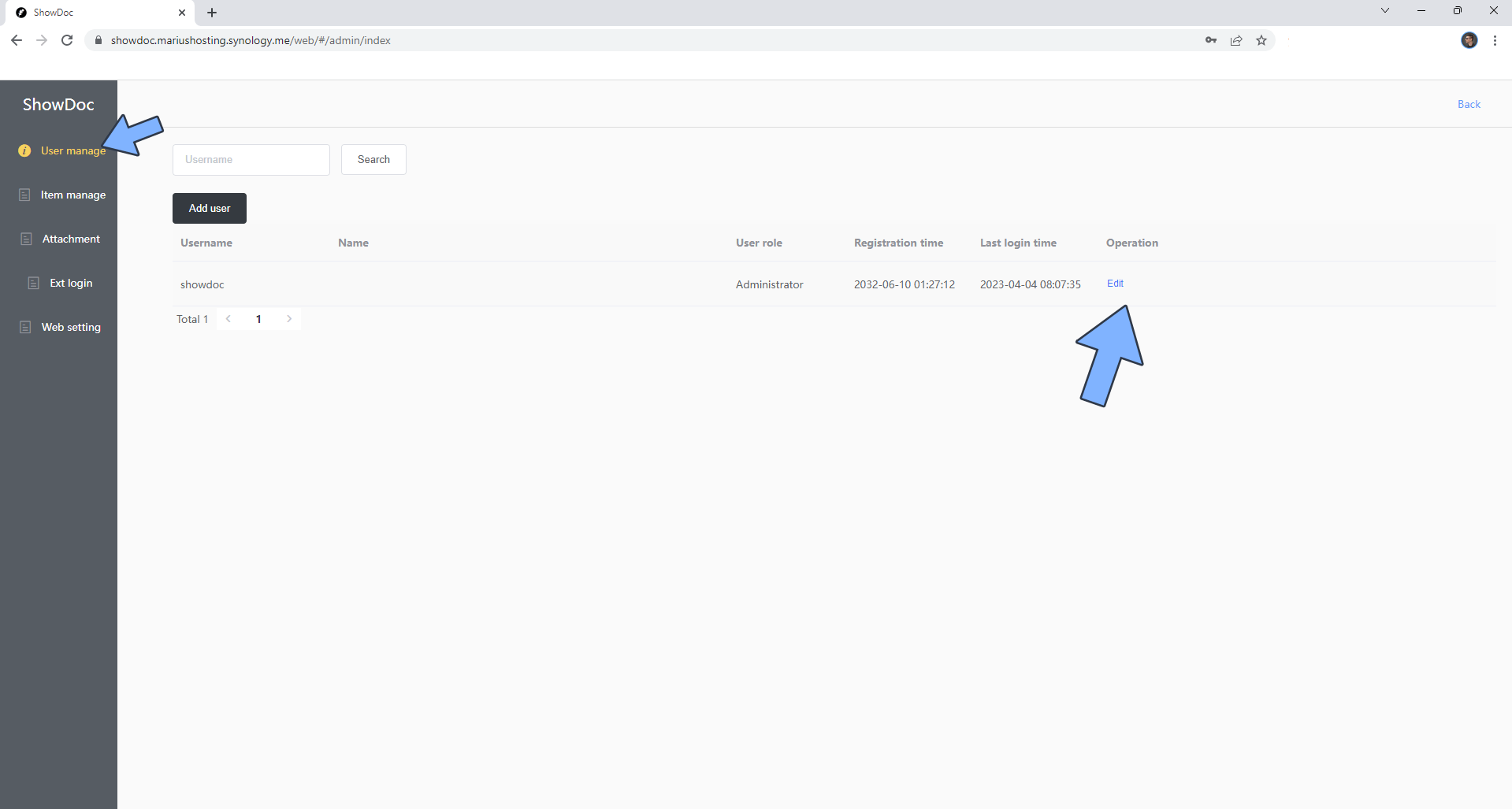
STEP 22
On the left sidebar, click Web setting. Disable user registration by switching the Open registration button. Click Save. Follow the instructions in the image below.
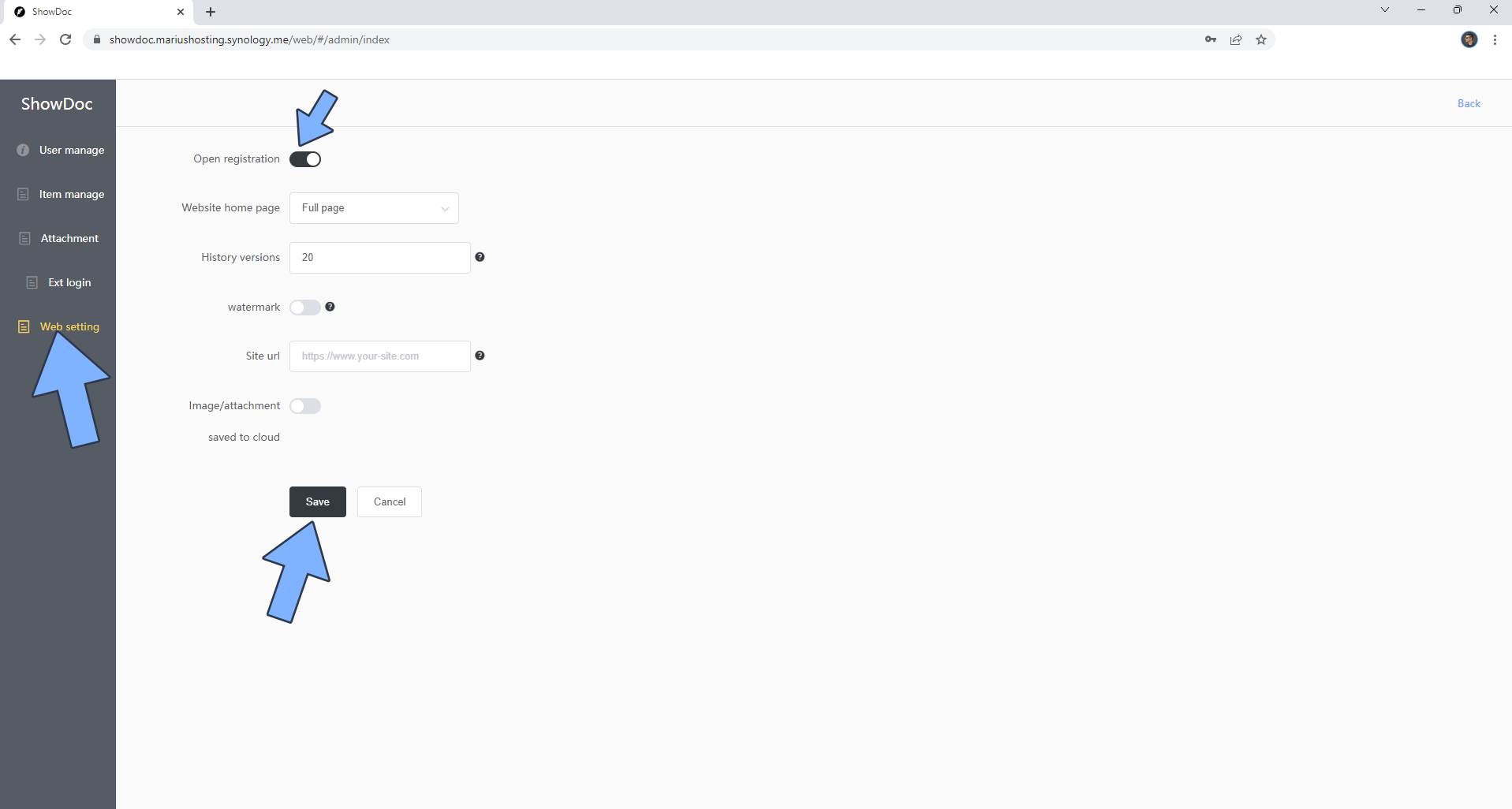
STEP 23
Go back to the first page. At the bottom of the page, click Create item. Choose Single Item. Follow the instructions in the image below.
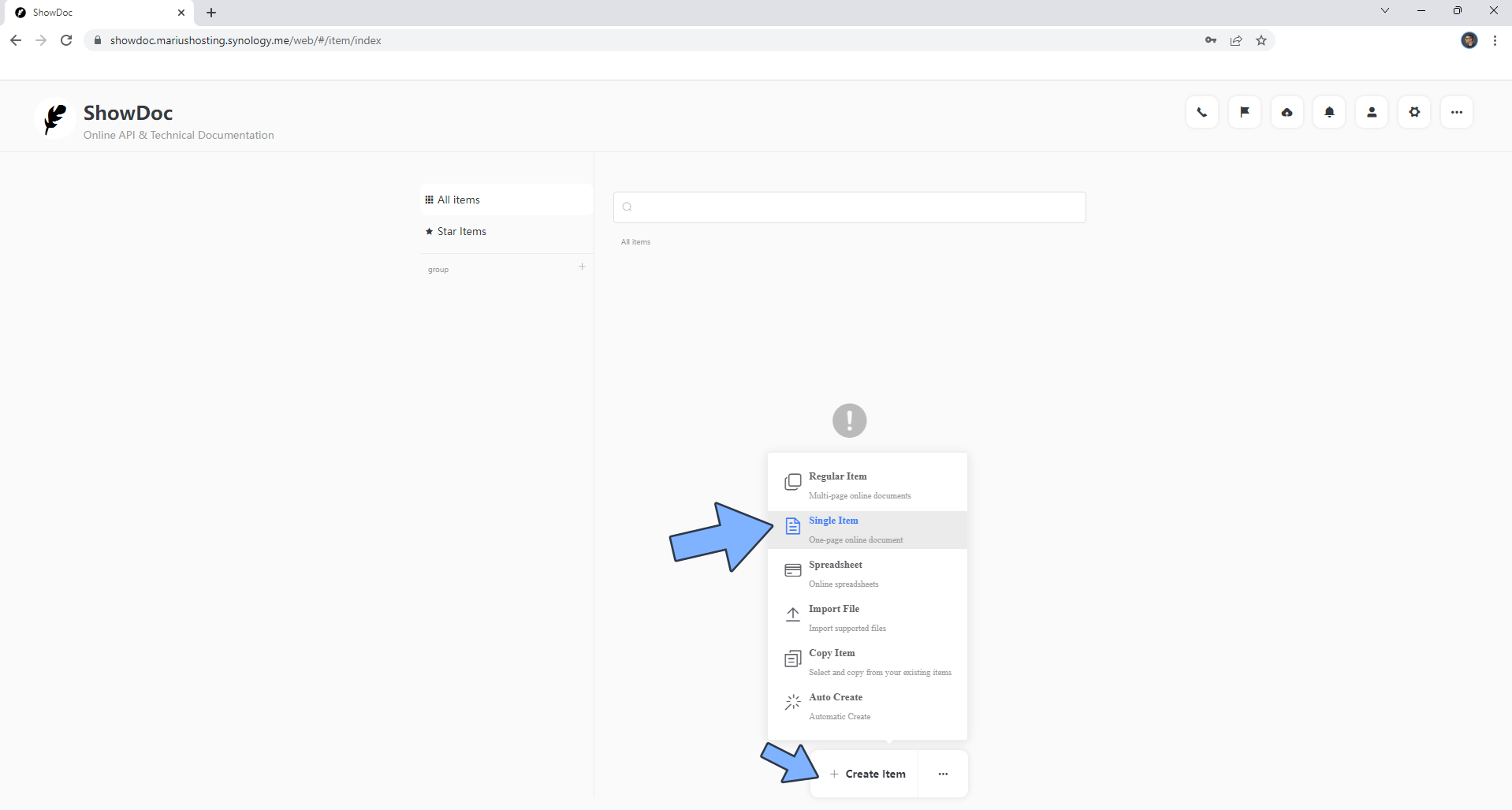
STEP 24
Give a name and a description to your document, then confirm. Follow the instructions in the image below.
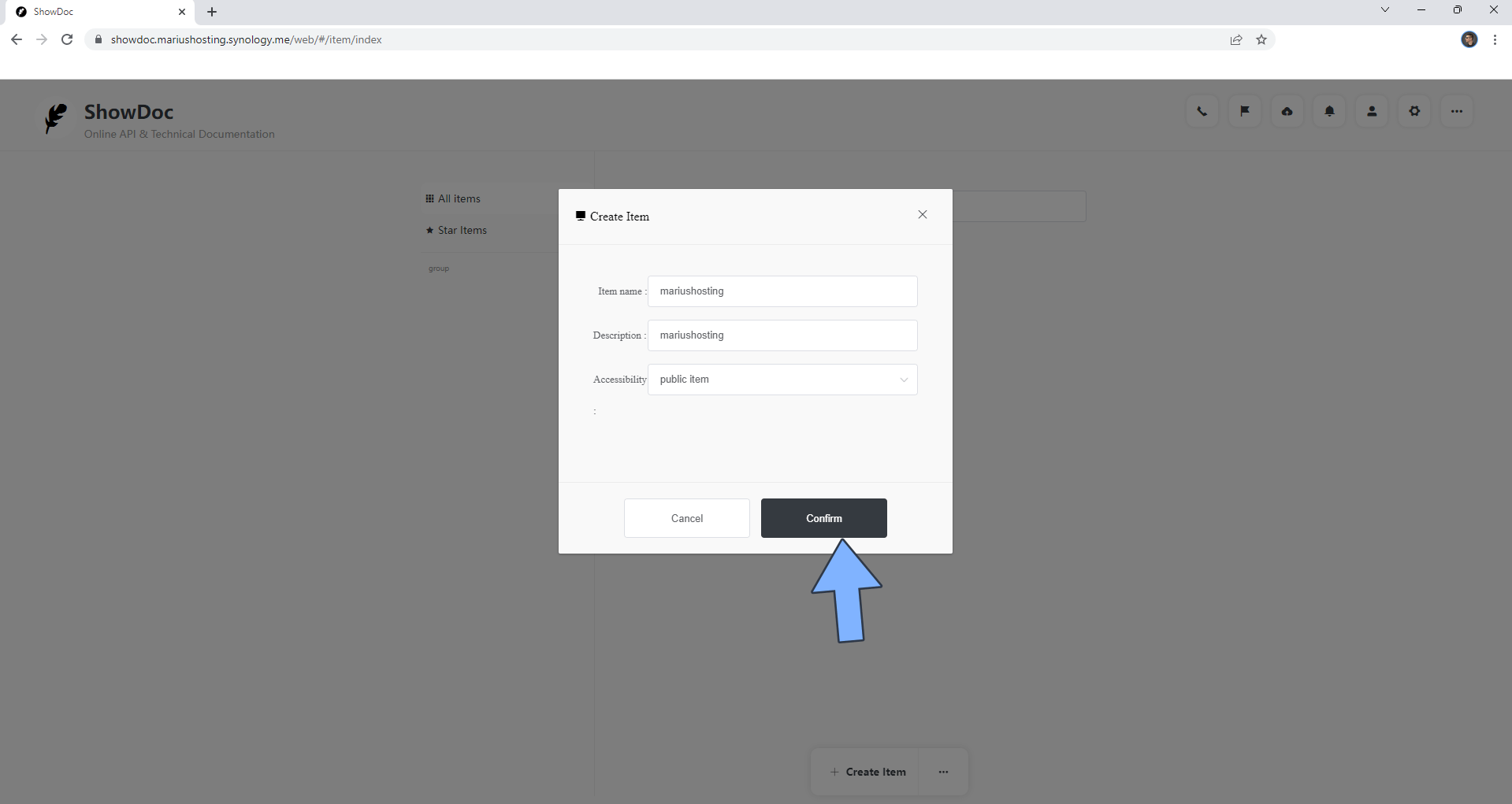
STEP 25
Click on your document. Follow the instructions in the image below.
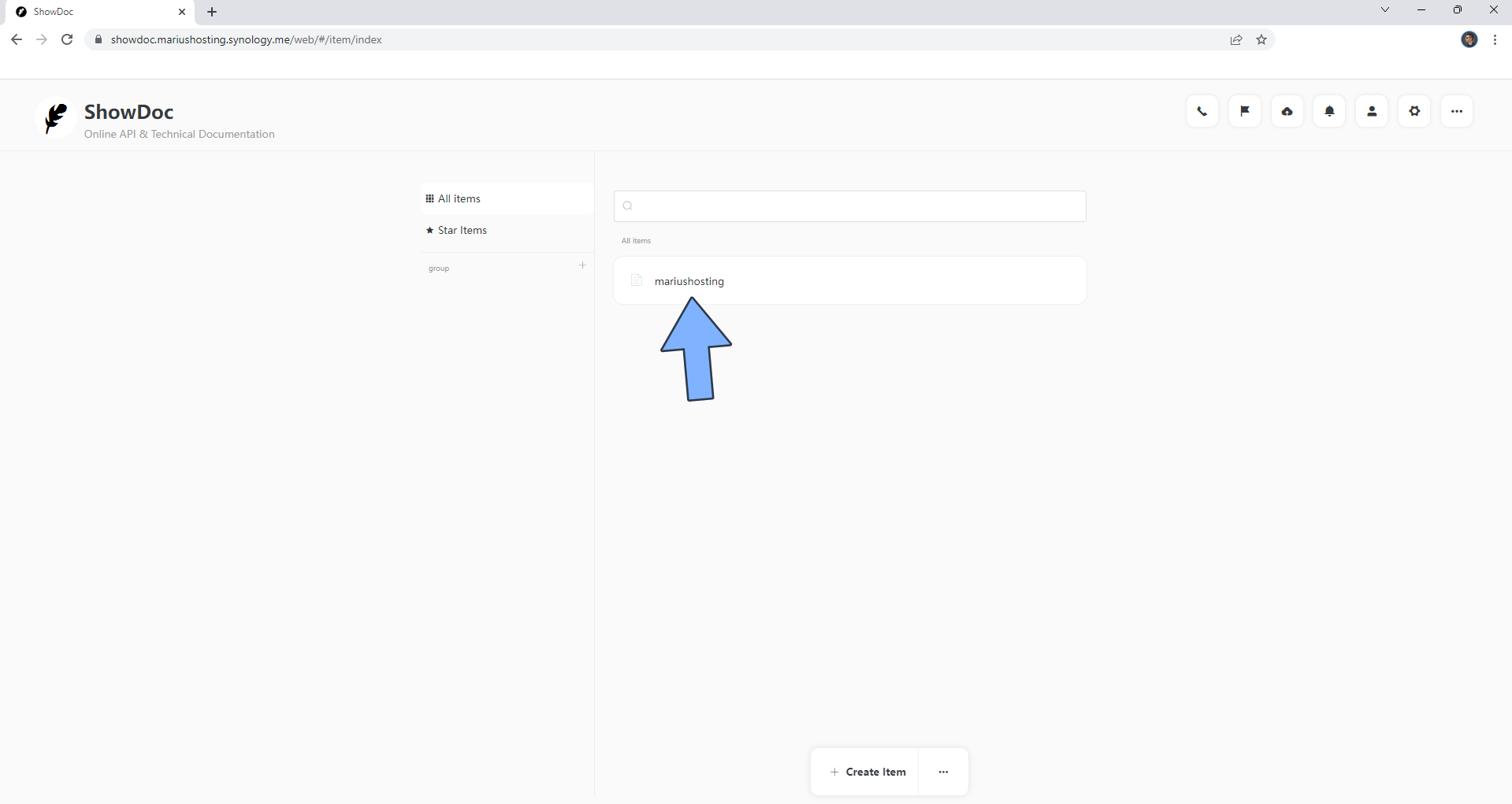
STEP 26
At the top right of the page, click on the modify button. Follow the instructions in the image below.
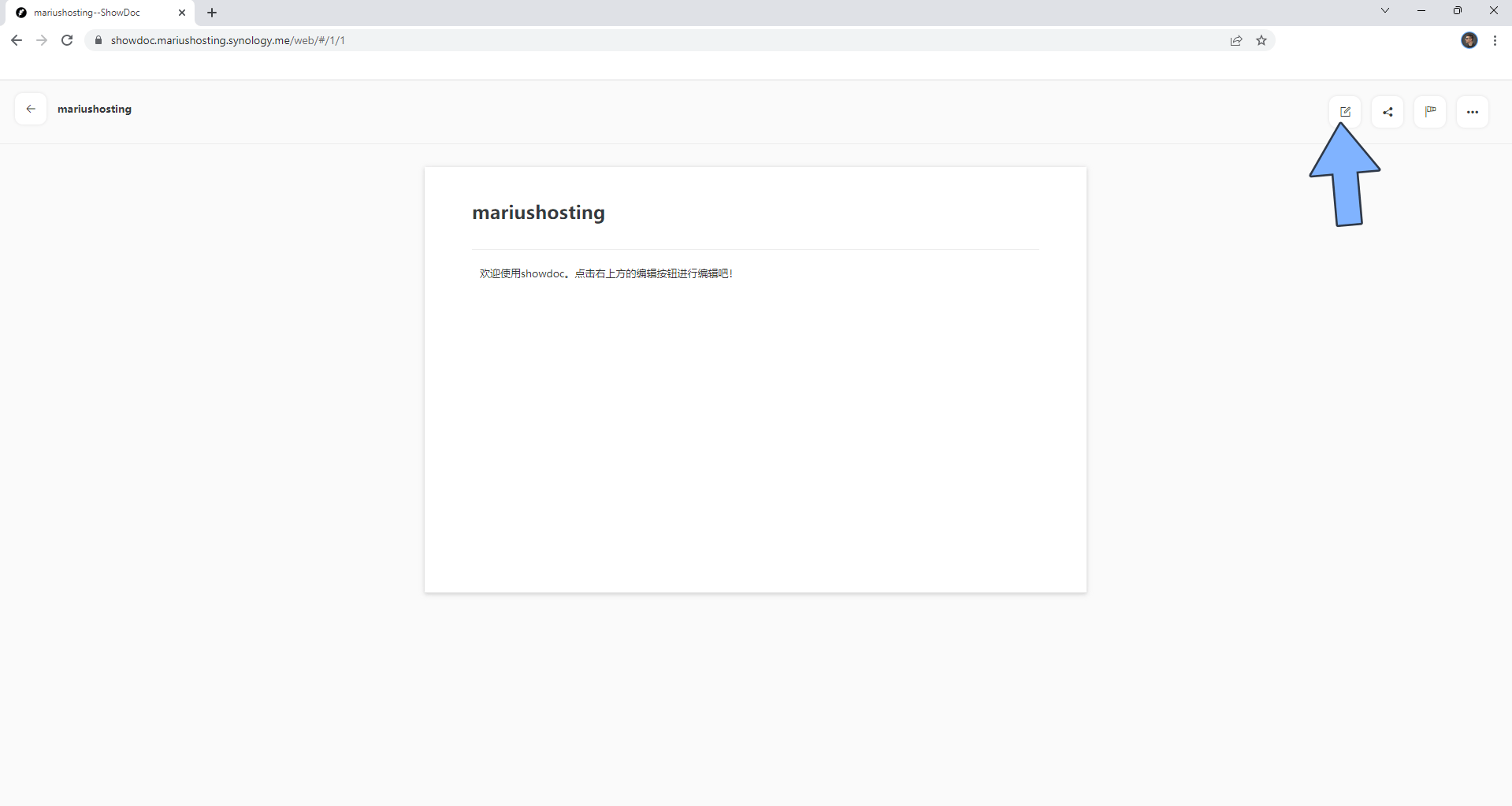
STEP 27
Enjoy your Markdown Editor!
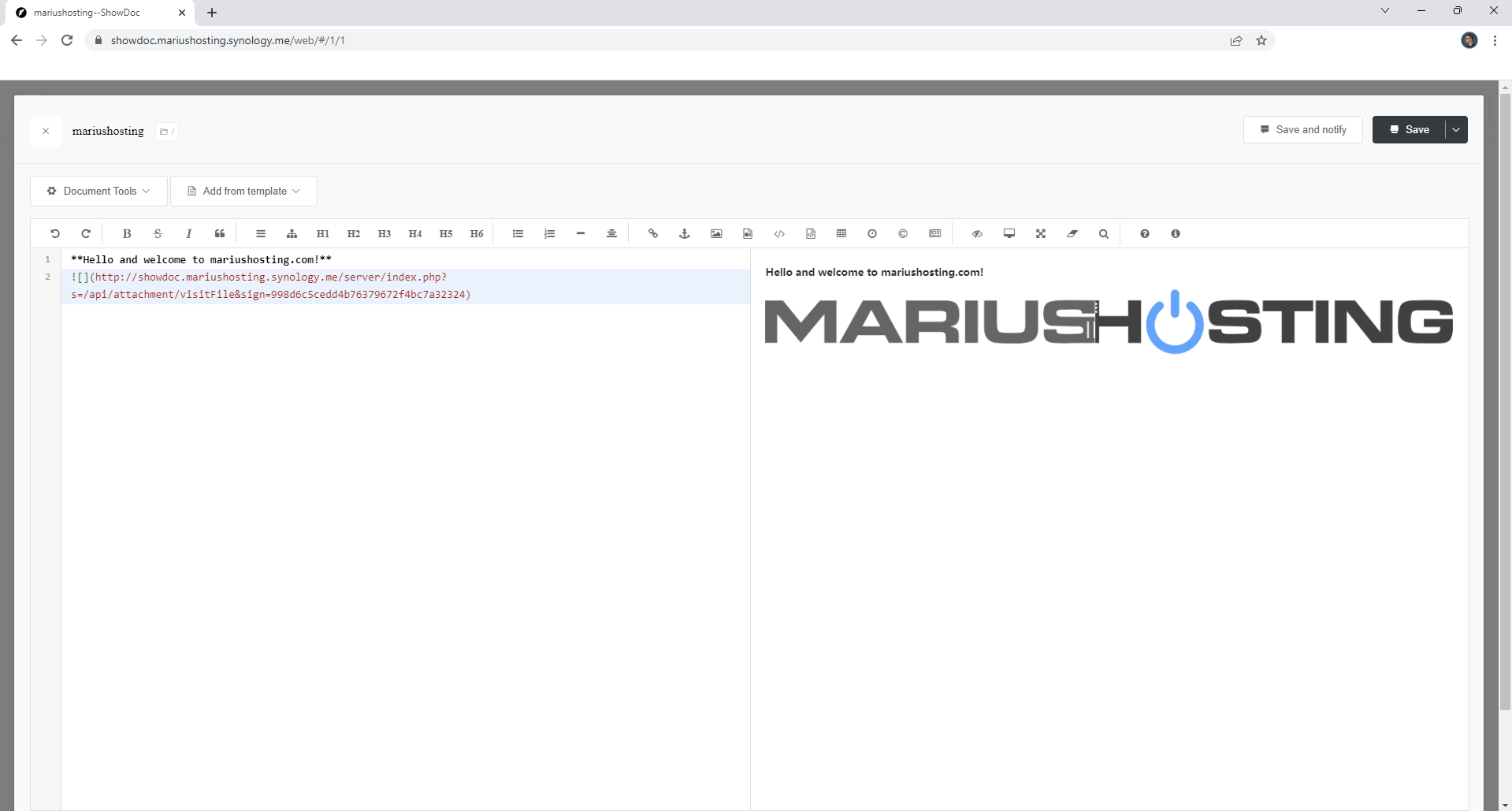
Enjoy ShowDoc!
If you encounter issues by using this container, make sure to check out the Common Docker issues article.
Note: Can I run Docker on my Synology NAS? See the supported models.
Note: How to Back Up Docker Containers on your Synology NAS.
Note: Find out how to update the ShowDoc container with the latest image.
Note: How to Free Disk Space on Your NAS if You Run Docker.
Note: Instead of the synology.me DDNS you can also use your own domain name.
Note: How to Schedule Start & Stop For Docker Containers.
Note: How to Activate Email Notifications.
Note: How to Add Access Control Profile on Your NAS.
Note: How to Change Docker Containers Restart Policy.
Note: How to Use Docker Containers With VPN.
Note: Convert Docker Run Into Docker Compose.
Note: How to Clean Docker.
Note: How to Clean Docker Automatically.
Note: Best Practices When Using Docker and DDNS.
Note: Some Docker Containers Need WebSocket.
Note: Find out the Best NAS Models For Docker.
Note: Activate Gmail SMTP For Docker Containers.
This post was updated on Thursday / August 28th, 2025 at 6:33 PM
